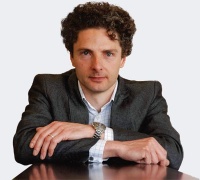Report sets out energy-saving challenges to design industry
A cross-industry workshop has developed a series of proposals for making homes more energy efficient, and is calling on designers and others to take the ideas forward.
The Design Council and the Department of Energy & Climate Change have created the report How Can We Help People Make Their Homes More Efficient? which details eight design challenges that need to be tackled, as well as two ideas for taking on each challenge.
The report came about after DECC identified a need to encourage homeowners to carry out energy-saving measures such as installing loft-cavity and solid-wall insulation. The report sets down an ambition to have loft and cavity-wall insulation installed in every home in the UK by 2015.
However, the report also notes, ’For consumers the path to home energy efficiency is a complex one and the benefits are difficult to recognise. There is a need to help home-owners recognise the end goal and learn the skills to manage their home energy efficiency.’
Mat Hunter, chief design officer at the Design Council, says DECC approached the Design Council after seeing its work in the healthcare arena, with programmes including Design Bugs Out and Design For Patient Dignity, believing that these approaches would be transferable to problems around energy efficiency.
In order to tackle the problem, a workshop day, featuring consultancies, retailers and other stakeholders, was held on 23 March, organised by DECC, the Design Council, the Energy Saving Trust and Eaga, and facilitated by consultancy Unlocked. Hunter says, ’We wanted to get as many major players together as possible.’
Hunter says that as well as developing potential outcomes, one of the most important aspects of the workshop was creating tools that could ’get into the mind of the consumer’. The workshop used market research conducted by 2CV as well five user scenarios based on interviews conducted by Unlocked.
These identified eight design challenges that would have to be addressed in order to increase the uptake of energy-efficiency measures in the home. These issues included catalysing consumer action through joined-up campaigns and making it easier for home-owners to fit insulation themselves. For each challenge, two concepts were developed, drawn from more than 40 that emerged from the workshop.
Hunter says, ’What really interested me were the relatively simple ideas that were developed.’ He cites a proposal for TV weather forecasters to advise people to turn their thermostats down, and a suggestion that retailers provide improved instructions when selling insulation products, to allow home-owners to lag their own lofts.
Hunter says, ’I am fascinated by opportunities to influence the weather forecast, for example, and make people more aware of seasonal changes. It’s looking how we can make little tweaks to make people more aware.’
The ideas developed in the workshop have been collated in the report, and are available for consultancies or other bodies to develop, in accordance with intellectual property rights.
Hunter says, ’The report was created in an open-source manner, and some ideas are already being developed.’ He says the report will be featured on the Design Council website and also circulated to interested parties as part of ’a broader call to action’.

The eight design challenges
- Catalyse consumer action through joined-up campaigns
- Create funding mechanisms, incentives and rewards
- Make it easier to get someone in
- Train for new skills and accreditation
- Make it easier to do it yourself
- Create innovative insulation products
- Deliver intuitive home energy controls
- Use community to drive change
-
Post a comment




